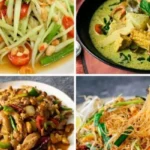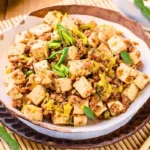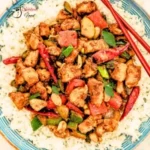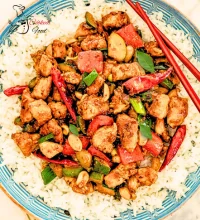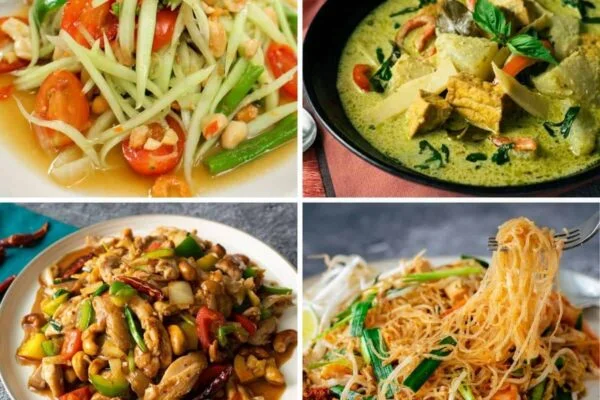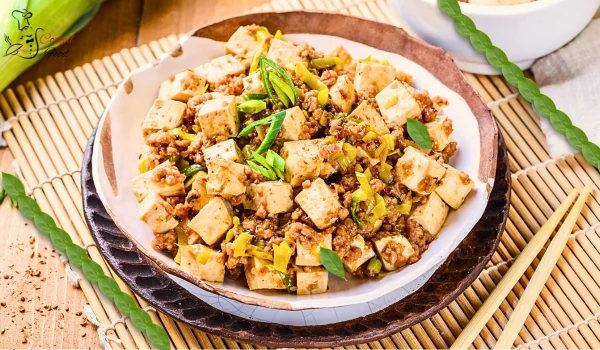A Chinese Cuisine Symphony of Flavours
Celebrated for its careful mix of flavours, textures, and smells, Kung Pao Chicken is a classic dish in Chinese cuisine. Originally from the Sichuan province, this meal has become a beloved fixture in Chinese restaurants all over thanks of great appreciation. This blog will explore the rich history, cooking techniques, cultural relevance, and worldwide versions of Kung Pao Chicken, therefore highlighting the reasons it continues to be a gastronomic classic.
Where Kung Pao Chicken originated
Known in Mandarin as “Gong Bao Ji Ding,” Kung Pao Chicken has a background in both culinary custom and mythology. The meal bears the name Ding Baozhen, a Qing Dynasty governor of Sichuan with formal title “Gong Bao,” or “Palace Guardian.” Ding reportedly loved strong and flavourful cuisine, which inspired the development of this meal in honour of his palette.
Made with basic materials including diced chicken, peanuts, and dried chilli peppers, Kung Pao Chicken was first a home-cooked dinner. The recipe changed with time, absorbing the strong and numbing tastes unique of Sichuan cuisine. Today, it represents Sichuan’s gastronomic legacy, prized for its capacity to balance spice, sweetness, and savoury flavours.
The Master of Making Kung Pao Chicken
Making Kung Pao Chicken calls both science and art, needing accuracy and knowledge of flavour dynamics. The preparation consists in numerous important phases:
Chicken marinating calls for To tenderise the meat and infuse it with taste, the chicken is chopped into bite-sized bits and marinated in soy sauce, Shaoxing wine, and cornflour.
Stir-frying the chicken in a hot wok with peanuts, dried chilli peppers and Sichuan peppercorns results in Reaching the distinctive smokey and fiery scent of the meal depends on this stage.
Made the sauce: Added to the wok, a savoury and somewhat sweet sauce created with soy sauce, vinegar, sugar, and a trace of sesame oil coats the chicken and peanuts uniformly.
Green onions provide the dish a fresh and flavourful finish in final assembly.
With its vivid colours and seductive scent, the dish comes out as visually stunning as it is good.
French cuisine and kung pao chicken: a cross-cultural link
Although Kung Pao Chicken is strongly ingrained in Chinese cooking history, its impact is felt outside of China in French cuisine. Both cooking customs stress the need of harmonising flavours and textures.
French cuisine like duck à l’orange achieves equilibrium between savoury and fruish ingredients, much as Kung Pao Chicken balances spice and sweetener.
Presentation: The painstaking cooking and plating of Kung Pao Chicken speak to the French focus on appearance.
Method: Stir-frying in a wok has resemblance with the French sautéing technique both of which provide top priority on high heat and fast cooking to maintain the integrity of contents.
This link underlines the international appeal of Kung Pao Chicken and its capacity to motivate cooks from many gastronomic frontiers.
A Culinary Journey: Savouring Kung Pao Chicken
Eating Kung Pao Chicken is a sensory engaging experience involving all the senses. The following components define it as really unique:
Taste profile created by the interaction of spicy, sweet, and savoury flavours develops with every bite. Textural contrast is created by the soft chicken, crunchy peanuts, and somewhat crispy dried chillies. Using Sichuan peppercorns and dried chillies produces a rich, smokey aroma that tantalises the senses. Customising Kung Pao Chicken to fit several palates means substituting tofu, prawns or even cashews for peanuts.
Globally Influential Kung Pao Chicken
Popularity of Kung Pao Chicken has extended beyond China and found favour in Chinese eateries all around. Often adjusted to fit local preferences by lowering the spiciness and adding vegetables like bell peppers and zucchini, it is a mainstay of American-Chinese cuisine in the United States.
Chefs in France have adopted Kung Pao Chicken as part of the global fusion movement, using French herbs or wine reductions to produce creative interpretations. < In various nations, the meal has also inspired several variants highlighting its adaptability and universal appeal.
Chinese Cooking: Kung Pao Chicken
Kung Pao Chicken is a celebration and hospitality emblem in Chinese cuisine, not only a meal. Often presented during celebrations and family get-togethers, it captures the shared Chinese dining attitude.
Popularity of the dish also reflects the Sichuanese idea of “mala,” which combines numbing and fiery tastes to excite the palette. This gastronomic idea emphasises the need of harmony and contrast, elements strongly rooted in Chinese food.
Advice for Perfect Kung Pao Chicken
Think on the following ideas to completely enjoy and copy the magic of Kung Pao Chicken:
Make use of real ingredients: Achieving the real taste sensation calls for sichuan peppercorns, Shaoxing wine, and dried chillies. Mastery of the Wok Stir-frying depends on a hot work, which guarantees fast and even cooking of the contents.
Harmonise the flavours: Change the soy sauce, vinegar, and sugar ratios to fit your taste.
Try several variations. Although the traditional recipe is ageless, don’t hesitate to investigate changes include substituting tofu or prawns for chicken.
The Development of Kung Pao Chicken
Kung Pao Chicken keeps changing and inspires as world gastronomic tastes do. To appeal to vegetarians and vegans, chefs are experimenting with plant-based substitutes as jackfruit or seitan and including alternative proteins. Furthermore reimagining this classic meal is using contemporary cooking methods including sous-vide and molecular gastronomy.
Notwithstanding these improvements, the core of Kung Pao Chicken stays the same. Its rich background, strong tastes, and cultural importance guarantee that it will be a beloved meal for next generations.
In essence
Kung Pao Chicken is evidence of the range and skilfulness of Chinese cooking. Foodies all around have been enthralled with its harmonic mix of tastes, textures, and smells; it is therefore a real culinary icon. From its modest beginnings in Sichuan to its worldwide variations, Kung Pao Chicken shows the ability of food to unite people and honour cultural legacy.
Whether eaten in a trendy fusion restaurant or a classic Chinese restaurant, Kung Pao Chicken presents a unique dining experience spanning decades and boundaries. Therefore, the next time you enjoy this meal, consider the background, talent, and passion that have made it a beloved classic in the field of gastronomy.

